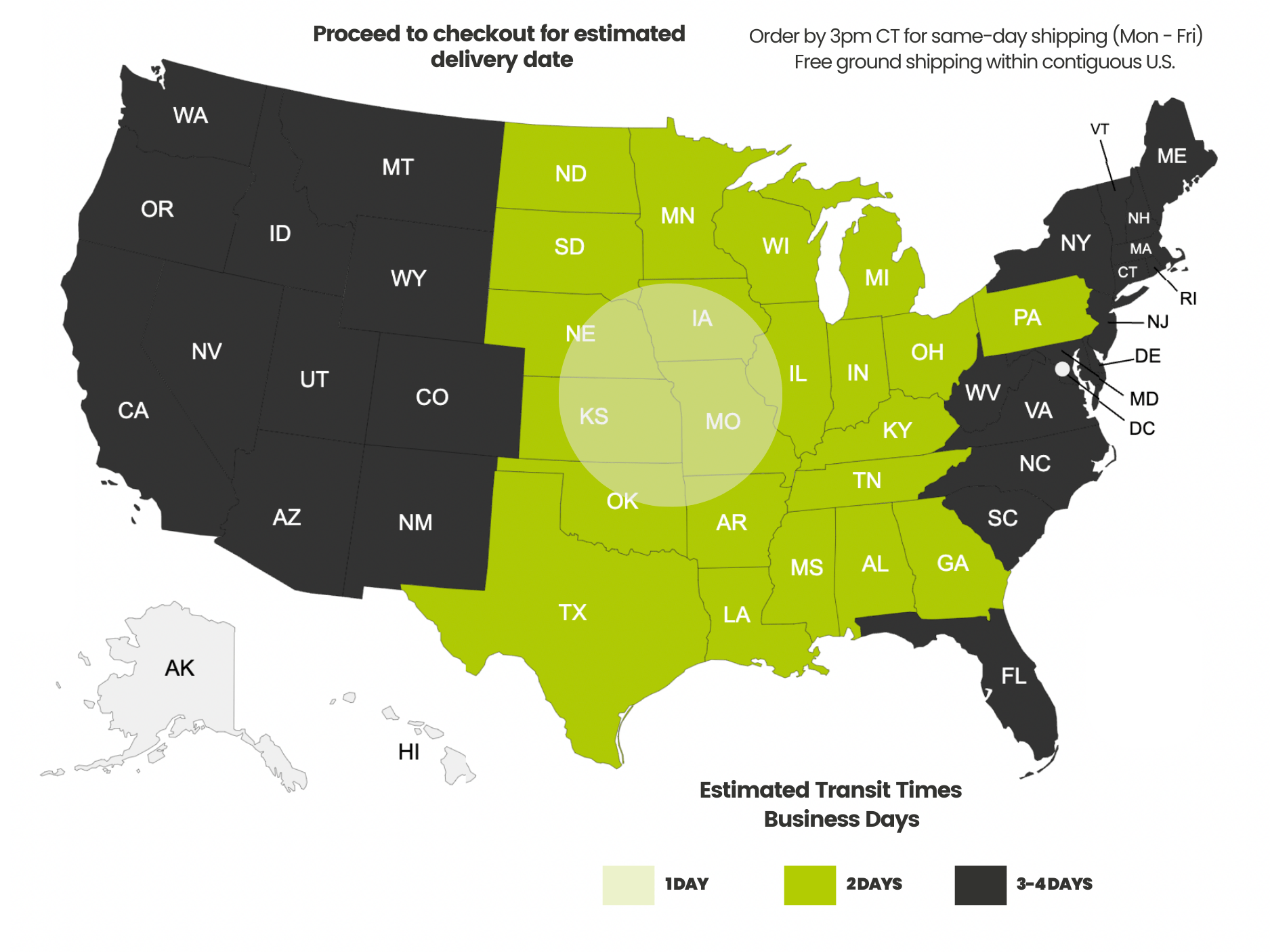Payment methods accepted

Debunking Common Misconceptions with Ethernet
Written by Don Schultz, trueCABLE Senior Technical Advisor, Fluke Networks Copper/Fiber CCTT, BICSI INSTC, INSTF Certified
Wired networking is the backbone and foundation of any properly constructed local area network (LAN). Even with advanced 5G UW, 4GLTE, Wi-Fi 6E, and Wi-Fi 7 becoming the norm, there is a structured cabling system of some sort behind it all. Considering we are discussing the most basic layer of a network, it occurred to me that we should really talk about the “wired part” from a “back to basics” starting point. Why? Well…
Over time, a great deal of well intentioned but misleading information has made it onto the Internet. This happens when best practices and standards compliance get confused with one-off success stories or strongly held personal beliefs borne out of narrow experiences. Inevitably, these beliefs get repeated and then repeated as fact. The truth is what worked well for one person may not work well for another, or at all. An accidental success, while ignoring all the actual industry best practices and guidelines, cannot and should not serve as guidance for future installations.
Even the term “Ethernet cable” itself can sometimes be a confusing term and also be the source of controversy. Not only are there common misconceptions about the very name of the cable in question, but those misconceptions stretch to various types of cable and what they are suitable for. In this blog, we will cover where the misunderstandings and misconceptions occur. Let’s clear this up, shall we?
As is typical, trueCABLE has created a video companion (not replacement) for this blog that helps to further clarify our current topic. Please take a look…but be sure to come back here and continue reading as the written blog adds even more information.
Misconception: What is Ethernet Cable?
One would think given the term has been around for decades we would have this part down, but not quite.
A common misconception is copper twisted pair Category cable is “Ethernet cable”. While Cat5e, Cat6, and other such copper twisted pair Category cable is purpose designed to carry Ethernet data packets, it is capable of carrying more types of signals than just Ethernet packets. HDBASE-T is a great example of this, where the data packets are for video systems. Ethernet is a protocol that defines how data is formed, constructed, error checked, and then transmitted between devices on a network so everything can “talk” to each other. The protocols are referenced (for example) as 100BASE-TX, 1000BASE-T, and so on. The cable itself facilitates data transmission, but is not technically part of the discussion. Why? Well, various types of physical cabling can transmit Ethernet data packets. They are:
- Copper twisted pair Category cable
- Coaxial cable
- Fiber optic cable
It is easy to understand how this misconception formed, however. Copper twisted pair Category cable like Cat6 has been used for Ethernet data transmission for a long time and is extremely popular for the task. Thus, copper Category cable has become conflated as “Ethernet cable”. It does not hurt to refer to twisted pair cabling in such a manner as long as everyone else understands what you are talking about, but don’t assume they do!
Myth: Pick the Biggest and Highest Rated Ethernet Patch Cables for Best Results

Be careful picking Ethernet patch cords. There are rather outrageous marketing claims designed to pull the wool over your eyes.
- Shielded patch cords are of limited use, especially if the permanently installed solid copper Ethernet cable is already shielded and properly bonded to ground.
- Cat7 Ethernet patch cords, using 8P8C (aka RJ45) plugs, are automatically counterfeit. The ISO/IEC 11801 specification specified GG45 and TERA connectors for Cat7. “RJ45” connectors are not part of that specification.
- Thick Ethernet patch cords are much more difficult to work with when wiring up a patch panel and patch cord manager. Shielding and unnecessarily high Category makes for a thick patch cord!
- When used as the entire communications channel (only one cable from your switch to end device) most patch cords work well enough but if a formal structured cabling system is involved then patch cord quality is critical. Always pick component rated and 100% Certified patch cords to be certain, as proper TIA patch cord testing is beyond most people’s capability.
The long and short of it is to pick a quality patch cord that passes component rated testing. It does not matter what Category it is supposedly rated to or the level of shielding present if the Ethernet patch cord won’t perform.

Ethernet patch cords have been a continual quality concern over the last several years. The reason? Most imported patch cords are counterfeit and do not perform to industry standards.
I suggest you take a close look at Introducing trueCABLE's New Cat6 Patch Cable - Optimized for High-Performance Network Upgrades in 2024 and Beyond.
Myth: Shielded Ethernet Cable is Superior to Unshielded Ethernet Cable


This is a frequent and persistent myth. How did this myth start? This myth started due to older concepts around interference associated with analog communications and A/V cabling where shielding was of actual benefit to analog signal quality. The fact is unshielded Ethernet cable already has built-in shielding of a sort due to the twists in the pairs and overall cable construction. Common unshielded Category twisted pair cable will shrug off the majority of common EMI/RFI found in office and residential environments.
There are situations where shielded Ethernet is required or a very good idea at the least, but these are uncommon. Environments such as:
- Radio stations
- Military and civilian radar sites
- Factory floors using powerful equipment and extremely high voltages
- Hospitals with medical equipment like MRI and CT scan machines
…are potentially situations where shielded Ethernet may be of benefit, but not automatically so. Distance can also be used to prevent interference in addition to metallic grounded pathways (ENT conduit).
If in doubt, please reference Top 5 Things to Consider When Running Ethernet Cable.

Don’t install shielded Ethernet cable unless you have a discernable and articulable reason for doing so. There are penalties such as cost and installation complexity that go with it!
Myth: Use Cat6A, Cat7, or Cat8 Category Ethernet Cable to Ensure High Quality
While it is true you should match your copper twisted pair Category cable for the speeds you intend to run with an eye to the future, you should be aware that over-purchasing will likely cost you more money and not get you anything in return. In addition, a higher Category Ethernet cable is not an indicator of high quality.
Consider these points:
- Residential Internet speeds are 2.5Gbps and less as of 2025. Even “lowly” Cat5e can handle that brilliantly, and at a low cost with ease of installation! Typically, the more features added to a cable also adds to installation complexity and cost.
- The quality of the installation, such as terminations and attention to detail, has a much greater impact on installation performance than cable Category.
- You cannot go any faster than your fastest piece of equipment. Are you limited to 1Gbps for the foreseeable future? Most people are.
- Cat8 Ethernet cable is only capable of its maximum speed to 100 feet. After 100 feet it operates just like Cat6A. In short, once you exceed 100 feet or if you don’t need to push 25Gbps or 40Gbps at any distance you wasted your money and dramatically increased your installation difficulty at the same time.
trueCable recommends unshielded (U/UTP) Cat6 as your starting point. It handles all foreseeable residential speeds while remaining low cost and easy to work with.
Myth: Cat5e is Dead and Buried
If I had a US $ for every time I heard this statement, I would own a small country by now. Cat5e, while certainly older and progressively getting longer in tooth, still serves the vast majority of residential installations well. Cat5e, when properly installed, easily achieves 2.5GBASE-T (2.5Gbps or 2,500 Mbps) speeds assuming you even have that speed of equipment -- and you likely don’t. That is fast, and the bonus is solid copper Cat5e will handle 100W DC PoE power. Here are some other useful points to consider Cat5e for certain installations:
- Cat5e is easier to terminate
- Cat5e is much lighter than higher Category cables and cable plant weight is of real concern in some installations
- Cat5e is thin and thin might be what is required for tight spots
- Installations with tight budgets
The two primary downsides to Cat5e are:
- PoE handling. In large bundles and especially bundles in conduit, Cat5e using 24AWG conductors is more limited in terms of cable count as DC wattages (and the resultant heat) go higher. See Power over Ethernet (PoE) Installation Best Practices for details and charts!
- Residential Internet speeds are now at 2.5Gbps, so Cat5e won’t be able to address the next speed bump upward to 5Gbps.

Pick Cat5e when it makes sense to do so without guilt or buyer’s remorse. If you are in doubt, trueCABLE stands ready to help and advise!
Myth: Ethernet Copper Twisted Pair Cable is Dead. Use Fiber Optic Instead.
Fiber optic is awesome technology, no doubt. Using light pulses to transmit data it is great for the following reasons:
- Fiber optic cable is absolutely resistant to EMI and RFI
- Fiber optical cable does not care about ambient temperatures so fiber optic insertion loss (signal degradation) won’t be caused by high temperatures
- Fiber cable is capable of transmitting for kilometers over a single segment, or at shorter distances at extremely high speeds (think 100Gbps)
- Far more communications circuits can be accommodated in a fiber optic cable than any type of copper communications cable making for a potentially very thin and light cable
That all said, there is one thing fiber optic glass cores cannot do and that is transmit electricity (DC wattage) to power up PoE (Power over Ethernet) devices like cameras and WiFi access points over a single cable. Sure, you can add some copper conductors in with the fiber conductors to get some low voltage electricity to a powered device, but the vast majority of PoE devices are not hybrid fiber/copper in nature and use a single cable for the task.
Here are some additional considerations as to why copper twisted pair Ethernet cable is far from dead:
- Copper Ethernet is installed in a huge number of homes and businesses already
- Technologically speaking, copper Ethernet Category cable is well understood and accessible to even DIY installers
- Copper Category cable works very well up to 10Gbps
Given the foregoing, copper twisted pair Category cable will be with us a very long time and likely become slowly phased out over a period of decades. All installations become hybrids anyway, leveraging the right technology at the right price for the intended need. Long haul links are served by fiber optic. Areas that cannot be wired, or where doing so would be impractical, are served by WiFi. Smaller zones that need to be wired (but fiber would be impractical) are best served by the tried and true Ethernet cable.
Conclusion
So, there you have it. We debunked some pretty common misconceptions and myths around Ethernet cable and set the record straight. Over time, opinions become fact and incorrect information becomes canon. Humans like to categorize and simplify things, which is normal. Humans also like to distill highly technical concepts down into the lowest common denominator as they are easier to remember. When all of these factors combine to sabotage a well executed communications cable system, we need to step back and correct it! With that said…
HAPPY NETWORKING!!
trueCABLE presents the information on our website, including the “Cable Academy” blog and live chat support, as a service to our customers and other visitors to our website subject to our website terms and conditions. While the information on this website is about data networking and electrical issues, it is not professional advice and any reliance on such material is at your own risk.



























